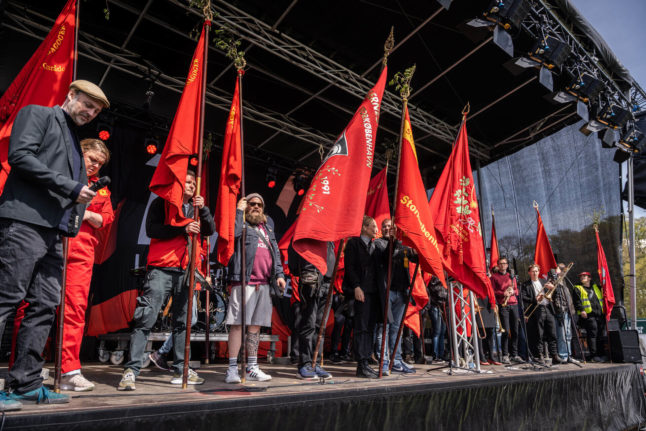If you’re out at a bar in Denmark this Friday evening, you can expect to encounter hordes of rowdy drinkers, many of whom will be wearing blue (yes, blue) Santa hats and other Christmas-adjacent attire to mark the occasion of j-dag or J-day, the day brewery Tuborg releases its julebryg Christmas beer.
Custom dictates that, at 8:59pm on the first Friday in November, thousands of free samples of the Christmas beer and accompanying themed hats are handed out to those quick enough to get their hands on them, as julebryg is officially released.
Many more bottles of the beer, with its instantly recognisable dark blue label with big white snowflakes, are passed across bars throughout the night in one of the busiest nights of the year.
Sweeter and darker than a regular pilsner, the julebryg also has a higher alcohol percent. While other breweries also produce Christmas beers and promote them at the same time of year, Tuborg has a firm grip on the annual festivities.
“J-day has become a big part of Christmas traditions for many Danes and we are pleased to celebrate this traditional evening with them and ring Christmas in when we present this year’s first Tuborg Julebryg,” Kasper Iwersen, Channel Activation Manager for Tuborg, said in a press statement earlier this week.
The beer will be handed out in dozens of bars in Copenhagen with other cities not far behind. Look out for specially-decorated trucks, artificial snow and various Tuborg freebies like hats and t-shirts, which will be given out as well as the beers themselves.
Tuborg’s marketing of the beer has not changed a great deal since the J-day tradition first emerged in the early 1990s, and the iconic ad featuring Santa’s sleigh and a Tuborg truck, with the words Glædelig jul og godt Tub’år (“Merry Christmas and a Happy Tub-year”) is synonymous with the Christmas party season.
The magic formula behind the success of the event – which is essentially a marketing stunt – is not so simple to pin down.
“I wish I could explain it. If I could give a scientific explanation for its success, we’d be doing other similar events,” a spokesman from Tuborg told The Local back in 2015.
But there is some logic as to why J-day is a repeated hit, according to Professor of Marketing Polymeros Chrysochou of Aarhus University’s Department of Management.
“Firstly, it’s been given specific day when something you haven’t been able to drink since last Christmas is released. From a psychological perspective, it’s as if you’ve been fasting and you’re looking forward to the day you finally get to eat again,” Chrysochou told broadcaster DR in 2021.
Similarities can be drawn between Tuborg’s marketing of J-day with Coca-Cola’s famous use of Santa Claus with his red clothes and white beard, he said to DR.
“If you want to create a tradition like this, you have to respond to consumers. J-day is a good match for Danish culture because there is a special tradition for Christmas beer that is not found in many other places,” he said.
“And it’s a good reason to go out and drink beer,” which Danes are always looking for, he added.



 Please whitelist us to continue reading.
Please whitelist us to continue reading.
Member comments